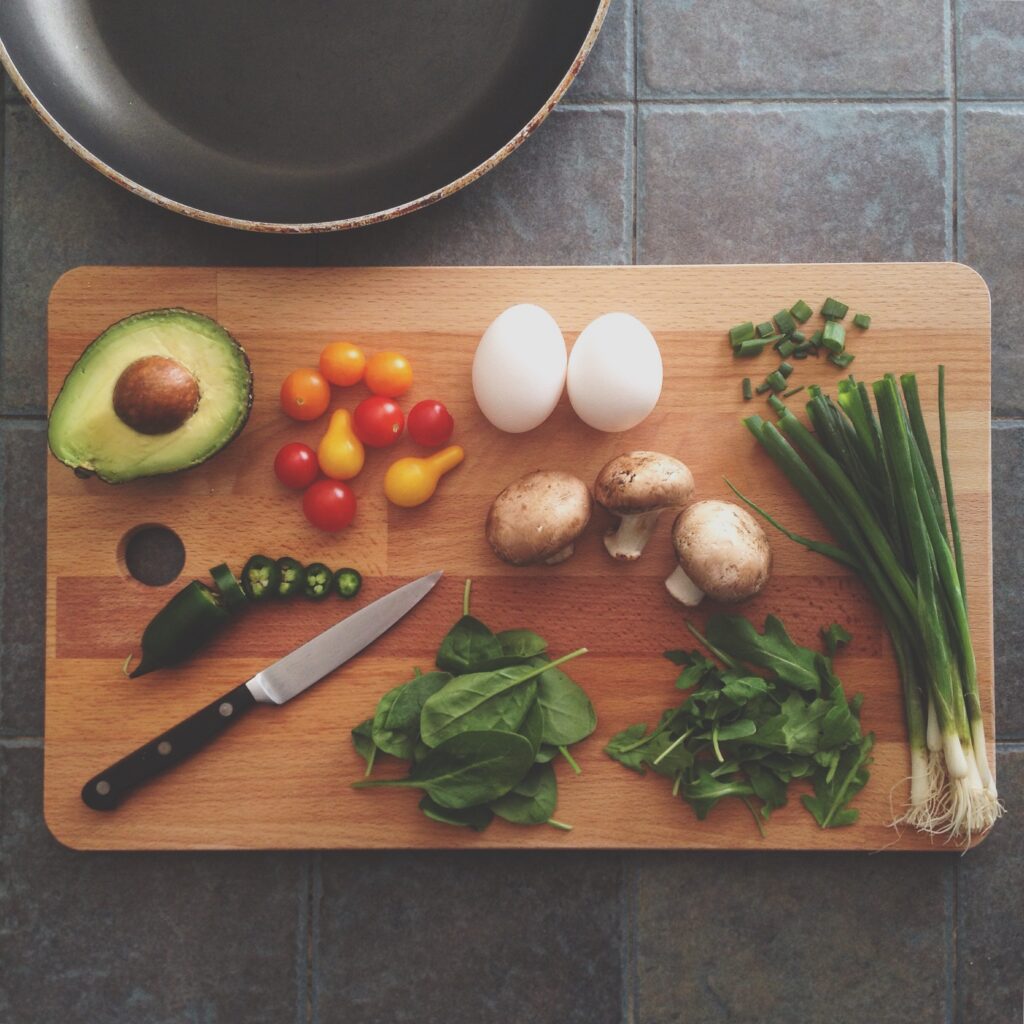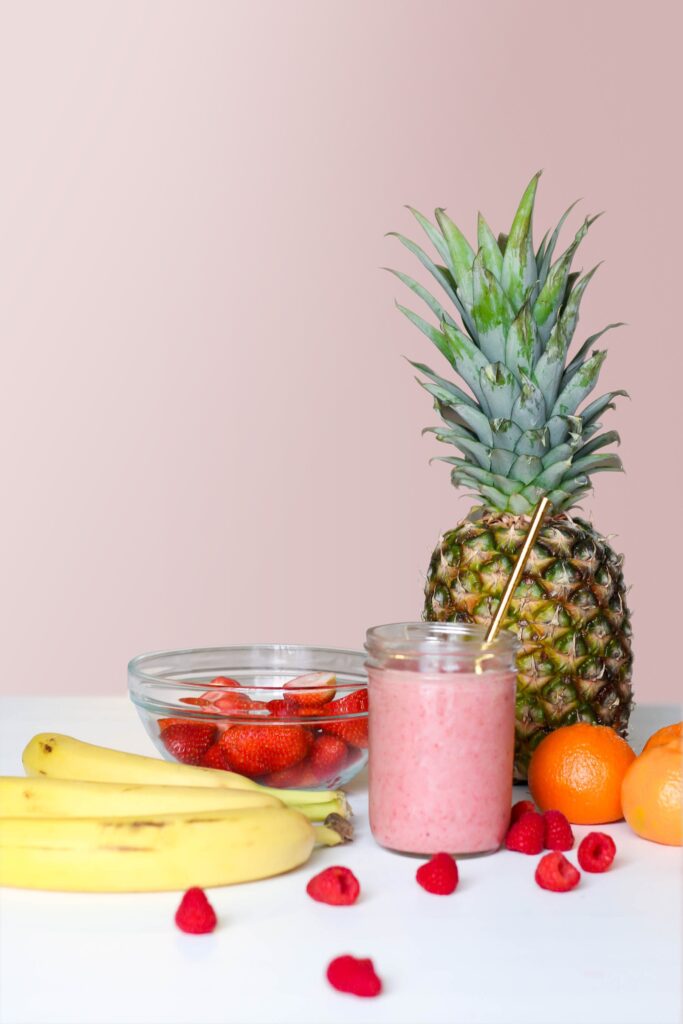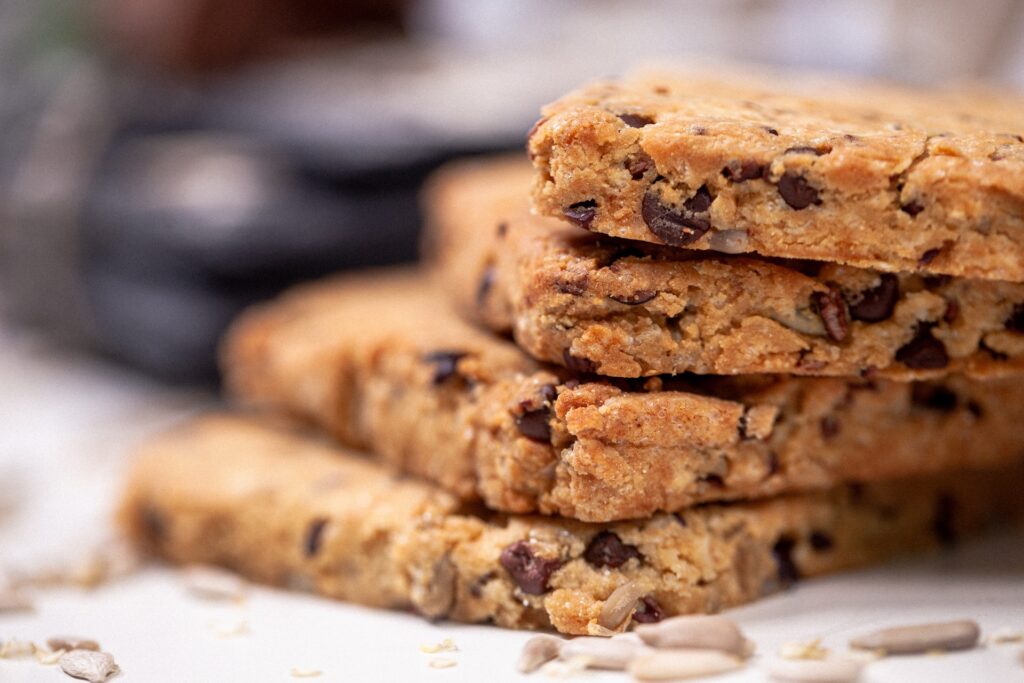
If you’ve found yourself asking this question, you’re not alone. The paleo diet has gained popularity in recent years, and many families are jumping on board. But figuring out how to cook meals that satisfy everyone’s dietary needs can be a challenge. In this article, we’ll explore some helpful tips and tricks for cooking for a family with a paleo diet, ensuring that you can enjoy delicious and nutritious meals together without any compromise. So, put on your apron and let’s get cooking!
Meal Planning for a Paleo Diet
Understanding the Paleo Diet
The Paleo Diet, also known as the Paleolithic Diet or the Caveman Diet, is a popular eating plan that focuses on consuming foods that mimic what our ancestors ate during the Paleolithic era. The main idea behind the Paleo Diet is to avoid processed and refined foods and focus on whole, nutrient-dense foods that our bodies are genetically adapted to digest. This diet emphasizes lean meats, fish, fruits, vegetables, nuts, and seeds while eliminating grains, legumes, dairy, and added sugars.
Identifying Paleo-Friendly Foods
When it comes to following a Paleo Diet, it’s important to have a good understanding of which foods are considered Paleo-friendly. Here are some examples of foods that fit well into a Paleo meal plan:
- Lean meats: such as grass-fed beef, chicken, turkey, and pork.
- Fish and seafood: including salmon, sardines, shrimp, and shellfish.
- Fresh fruits and vegetables: opt for a variety of colorful produce to ensure you’re getting a wide range of nutrients.
- Nuts and seeds: almonds, walnuts, chia seeds, and flaxseeds are great additions to a Paleo pantry.
- Healthy fats: coconut oil, olive oil, avocado oil, and ghee are excellent sources of healthy fats.
Creating a Meal Plan
Now that you have a good grasp of the Paleo Diet principles and the types of foods you should be focusing on, it’s time to start creating a meal plan. Planning your meals in advance not only helps you stay on track with your diet but also saves you time and money. Here are some tips for creating a successful Paleo meal plan:
- Start by identifying your favorite Paleo recipes and dishes.
- Consider your family’s preferences and dietary restrictions.
- Plan your meals for the week, taking into account breakfast, lunch, dinner, and snacks.
- Make a list of the ingredients you’ll need for each recipe.
- Set aside a specific day for meal prep, where you can prepare ingredients in advance.
- Aim for a balance of protein, healthy fats, and fiber in each meal.
- Don’t be afraid to repeat dishes or use leftovers creatively to minimize waste.
Stocking Your Pantry with Paleo Ingredients
Essential Paleo Staples
To cook delicious and nutritious meals on a Paleo Diet, it’s essential to have a well-stocked pantry. Here are some staple ingredients you’ll want to have on hand:
- Coconut flour and almond flour: These grain-free flours are great replacements for traditional wheat flour.
- Coconut aminos: A soy sauce alternative that adds flavor to your dishes without the soy.
- Nut butters: Almond butter, cashew butter, or sunflower seed butter are excellent sources of healthy fats and can be used in various recipes.
- Coconut milk: A dairy-free alternative that can be used in both savory and sweet dishes.
- Canned tuna and salmon: Quick and easy sources of protein that can be added to salads or used in recipes.
- Dried herbs and spices: Stock up on a variety of herbs and spices to add flavor to your meals without relying on processed ingredients.
Paleo-Friendly Condiments and Seasonings
Condiments and seasonings can transform a plain meal into a flavorful dish. Here are some Paleo-friendly options to consider:
- Mustard: Look for mustard without added sugars or artificial ingredients.
- Apple cider vinegar: A versatile ingredient that can be used in dressings, marinades, and sauces.
- Hot sauce: Some brands offer hot sauce without added sugars or other non-Paleo ingredients.
- Coconut aminos: A great replacement for soy sauce, perfect for stir-fries and marinades.
- Homemade mayonnaise: By making your own mayonnaise with Paleo-friendly ingredients, you can avoid unhealthy oils and additives.
Snacks and Quick Meal Options
Having Paleo-friendly snacks and quick meal options on hand is essential, especially for busy families. Here are some ideas to stock up on:
- Nuts and seeds: Almonds, walnuts, pistachios, pumpkin seeds, and sunflower seeds are all great options.
- Fresh fruits: Keep a variety of fruits readily available for a quick and healthy snack.
- Hard-boiled eggs: They make a convenient and protein-rich snack or addition to salads.
- Beef or turkey jerky: Look for jerky made without added sugars or artificial ingredients.
- Pre-cut vegetables: Chop up some carrot sticks, cucumber slices, or bell pepper strips to have on hand for easy snacking.

Cooking Methods and Techniques for Paleo Meals
Grilling and Roasting
Grilling and roasting are fantastic cooking methods for Paleo meals as they enhance the natural flavors of meats and vegetables while keeping them tender and juicy. For grilling, opt for lean cuts of meat like chicken breasts, steak, or fish fillets. Marinating the meat beforehand can add extra flavor. Roasting vegetables such as sweet potatoes, Brussels sprouts, or cauliflower is a delicious way to bring out their natural sweetness and create a caramelized exterior.
Stir-Frying and Sautéing
Stir-frying and sautéing are quick and efficient cooking methods that allow you to retain the nutrients and flavors of your ingredients. When stir-frying, use a Paleo-approved oil like coconut oil or avocado oil, as they can withstand high heat without oxidizing. Sautéing vegetables like broccoli, zucchini, or spinach in a skillet with some garlic and onion is a tasty way to make a colorful side dish or a base for protein.
Baking and Steaming
Baking and steaming are gentle cooking techniques that help preserve the nutrients in your food while still creating delicious Paleo meals. Baking chicken thighs or salmon fillets with a mix of spices and herbs can result in moist and flavorful dishes. Steaming vegetables like asparagus, cabbage, or green beans helps maintain their vibrant colors and crisp textures. Additionally, steaming is a great way to cook seafood, such as shrimp or mussels, without added fats.
Paleo Breakfast Ideas for the Family
Egg-Based Dishes
Eggs are a staple in many Paleo breakfast recipes due to their versatility and nutritional benefits. Here are some egg-based dishes you can try:
- Vegetable omelette: Whisk together eggs and fill them with sautéed vegetables of your choice, such as bell peppers, mushrooms, and spinach.
- Shakshuka: A delicious Middle Eastern dish where eggs are poached in a flavorful tomato sauce with onions, garlic, and spices.
- Breakfast burritos: Use lettuce leaves as a wrap and fill them with scrambled eggs, bacon or sausage, and some diced avocado.
Paleo Pancakes and Waffles
Who said you can’t have pancakes or waffles on a Paleo Diet? With a few simple substitutions, you can still enjoy these breakfast favorites:
- Almond flour pancakes: Combine almond flour, eggs, baking powder, and your choice of sweetener to create fluffy and delicious pancakes.
- Coconut flour waffles: Replace regular flour with coconut flour and enjoy crispy and light waffles. Serve them with some fresh fruit or a drizzle of maple syrup.
Smoothies and Fruit Medleys
If you prefer a lighter and refreshing breakfast, smoothies and fruit medleys are great options:
- Green smoothie: Blend together a handful of spinach or kale, a frozen banana, some almond milk, and a scoop of nut butter for a nutrient-packed breakfast on the go.
- Fruit medley: Combine a variety of fresh fruits like berries, melons, and citrus fruits for a colorful and tasty fruit salad. Top it with a sprinkle of unsweetened shredded coconut or chopped nuts.

Lunch and Dinner Recipes for a Paleo Family
Protein-Rich Main Courses
Including a protein-rich main course in your lunch and dinner meals is important for staying satiated and nourished. Here are some Paleo-friendly protein options:
- Grilled chicken breasts: Marinate them in a mixture of olive oil, lemon juice, garlic, and herbs for extra flavor.
- Baked salmon: Season the salmon with a combination of herbs and spices, and bake until flaky and tender.
- Grass-fed beef burgers: Opt for lean ground beef and serve them in lettuce wraps or on top of a portobello mushroom bun.
Vegetable and Salad Options
To accompany your protein-rich main courses, incorporate a variety of vegetables and salads:
- Roasted root vegetables: Toss vegetables like sweet potatoes, carrots, and parsnips with olive oil, salt, and pepper, and roast until caramelized and tender.
- Mixed green salad: Create a colorful salad with a mix of leafy greens, cherry tomatoes, cucumbers, and your choice of nuts or seeds for added crunch.
- Cauliflower rice: Grate or pulse cauliflower in a food processor and sauté it with some garlic and onion for a delicious and grain-free alternative to rice.
Paleo-Friendly Side Dishes
Don’t forget to add some flavorful side dishes to complete your meals:
- Zucchini noodles: Spiralize zucchini and cook it briefly in a skillet with some olive oil until it’s just tender. Serve as a low-carb alternative to pasta.
- Roasted Brussels sprouts: Roast Brussels sprouts with a drizzle of olive oil, salt, and pepper until they’re crispy on the outside and tender on the inside.
- Mashed cauliflower: Steam cauliflower until soft, then blend or mash it until it reaches a mashed potato-like consistency. Season with herbs and spices for added flavor.
Snack and Dessert Ideas for a Paleo Diet
Homemade Trail Mix
Trail mix is a convenient snack that can be customized to your family’s preferences. Here’s how you can create a delicious and Paleo-friendly trail mix:
- Start with a variety of nuts such as almonds, walnuts, and cashews.
- Add in some dried fruits like raisins, dried cranberries, or dried apricots.
- Include some seeds like pumpkin seeds or sunflower seeds for added crunch.
- For a touch of sweetness, add some dark chocolate chips or chunks.
Crunchy Veggie Dippers
If you’re in the mood for a crunchy and satisfying snack, try making veggie dippers with some Paleo-friendly dips:
- Slice up some colorful bell peppers, jicama, cucumber, and celery.
- Prepare a homemade guacamole using ripe avocados, lime juice, cilantro, and diced tomatoes.
- Make a creamy Paleo ranch dip using coconut milk or cashews, herbs, and spices.
Paleo-Friendly Baked Goods
Although traditional baked goods are off-limits on a Paleo Diet, you can still enjoy some delicious treats with Paleo-approved ingredients:
- Almond flour cookies: Replace regular flour with almond flour and use natural sweeteners like maple syrup or honey to sweeten your cookies.
- Coconut flour muffins: Coconut flour can create a light and fluffy texture in muffins. Pair it with your favorite fruits or nuts for added flavor and crunch.
- Paleo banana bread: Use ripe bananas, almond flour, and eggs to create a moist and flavorful banana bread. Add some chopped nuts or dark chocolate chips for extra decadence.

Tips for Cooking Paleo Meals in Bulk
Batch Cooking for Time Efficiency
Cooking in bulk is a great strategy to save time and ensure you always have healthy meals on hand. Here are some tips for batch cooking:
- Plan your meals for the week and create a detailed shopping list.
- Choose recipes that can be easily scaled up without compromising on taste or quality.
- Prep ingredients in advance, such as washing and chopping vegetables, marinating meats, or portioning out snacks.
- Cook larger quantities of proteins, like chicken or beef, that can be used in various dishes throughout the week.
- Invest in quality food storage containers to keep your meals fresh and organized.
Freezing and Proper Storage Techniques
Freezing meals and ingredients is a fantastic way to extend their shelf life and reduce food waste. Here are some storage techniques to keep in mind:
- Portion out your meals into individual servings before freezing. This makes it easier to defrost and reheat when you’re ready to enjoy them.
- Use freezer-safe containers or resealable bags to store your meals. Make sure to label them with the date and contents for easy reference.
- Keep an inventory of your freezer to keep track of what you have on hand and avoid forgetting about dishes that need to be consumed.
- When defrosting meals, do so in the refrigerator to maintain food safety. Alternatively, you can use the defrost setting on your microwave.
Make-Ahead Meal Preparations
Meal prepping can be a game-changer when it comes to sticking to your Paleo Diet. Here are some make-ahead meal ideas:
- Mason jar salads: Layer your favorite salad ingredients, starting with the dressing at the bottom, followed by hearty vegetables, proteins, and leafy greens. These can be stored in the fridge and enjoyed throughout the week.
- Freezer-friendly casseroles or soups: Prepare large batches of casseroles or soups that freeze well and portion them out into individual servings. This way, you can simply defrost and reheat for a quick and nutritious meal.
- Pre-cut and wash vegetables: Spend some time washing, peeling, and chopping vegetables in advance. Store them in airtight containers or bags so they’re ready to use when you need them.
Managing Paleo Meals on a Budget
Choosing Cost-Effective Protein Sources
Eating Paleo on a budget doesn’t mean you have to sacrifice quality or nutrition. Here are some cost-effective protein sources to consider:
- Chicken thighs: Opting for chicken thighs instead of chicken breasts can be more budget-friendly and still provide ample protein.
- Canned fish: Canned tuna, salmon, or sardines are affordable sources of protein and healthy fats. Look for brands that offer wild-caught options.
- Eggs: Eggs are not only a great way to save money but are also nutrient-dense and versatile. Consider purchasing them in bulk for additional savings.
Utilizing Seasonal and Local Produce
Buying seasonal and local produce is not only more environmentally friendly but can also be more budget-friendly. Here’s why:
- Seasonal produce is often more abundant and therefore less expensive.
- Local produce tends to travel a shorter distance, resulting in fresher and more affordable options.
- Visit farmers’ markets or join a community-supported agriculture (CSA) program to access fresh and affordable produce directly from local farmers.
DIY Paleo Snacks and Staples
Making your own Paleo snacks and staples at home can be a cost-effective alternative to store-bought options. Here are some ideas:
- Make your own nut bars or energy balls using a combination of nuts, seeds, dried fruits, and natural sweeteners like honey or dates.
- Create your own spice blends by combining different herbs and spices to flavor your dishes. This way, you can avoid expensive pre-packaged spice mixes.
- Prepare your own nut butters, such as almond butter or cashew butter, by blending nuts with a food processor or high-speed blender.
Incorporating Variety in Paleo Meals
Exploring Different Protein Sources
While meat is a common source of protein in the Paleo Diet, it’s important to incorporate a variety of protein sources to ensure a well-rounded and diverse diet. Here are some alternative protein sources to consider:
- Seafood: Expand your seafood options by including shrimp, scallops, mussels, or other types of fish in your meals.
- Plant-based proteins: Incorporate legumes such as lentils or chickpeas if they’re well-tolerated, or try tofu or tempeh for a plant-based protein alternative.
- Game meats: If available and within your dietary preferences, experiment with game meats like bison, venison, or elk for a unique and nutrient-dense protein source.
Integrating Colorful and Nutrient-Rich Veggies
Incorporating a wide range of colorful vegetables into your meals is not only visually appealing but also ensures you’re getting a variety of nutrients. Here are some tips for integrating more veggies into your Paleo meals:
- Experiment with different cooking methods for vegetables, such as roasting, grilling, steaming, or stir-frying, to add variety in texture and flavor.
- Opt for a mix of leafy greens, cruciferous vegetables (broccoli, cauliflower, kale), root vegetables (carrots, beets, sweet potatoes), and colorful bell peppers to create a colorful plate.
- Consider adding fermented vegetables like sauerkraut or kimchi, as they not only provide probiotics but also add a tangy and unique flavor to your meals.
Experimenting with Paleo-Friendly Flavors
One of the misconceptions about the Paleo Diet is that it lacks flavor and variety. However, the key to tasty Paleo meals lies in experimenting with different flavors and seasonings. Here are some ideas to get you started:
- Incorporate fresh herbs like basil, parsley, cilantro, or rosemary into your dishes to add depth and aroma.
- Experiment with different spices like turmeric, cumin, paprika, or cinnamon to add warmth and complexity to your meals.
- Try using citrus fruits like lemon, lime, or orange to brighten up the flavors of your dishes.
Encouraging Balanced Nutrition in a Paleo Family
Monitoring Macro and Micronutrient Intake
To ensure a balanced and nutrient-rich diet within the Paleo framework, it’s important to pay attention to both macronutrients (carbohydrates, protein, and fats) and micronutrients (vitamins and minerals). Here are some tips:
- Include a variety of protein sources to meet your daily requirements.
- Prioritize complex carbohydrates from vegetables, fruits, and occasional starchy tubers.
- Incorporate healthy fats from sources like avocados, nuts, seeds, and fatty fish.
- Don’t forget to include a variety of fruits and vegetables to obtain a wide range of essential vitamins and minerals.
Ensuring Sufficient Fiber Intake
Fiber is an essential part of a healthy diet and plays a key role in digestive health and overall well-being. Here’s how you can ensure sufficient fiber intake on a Paleo Diet:
- Incorporate a variety of vegetables, as many of them are excellent sources of dietary fiber.
- Include various fruits, especially those with edible skins or seeds, as they tend to be higher in fiber.
- Experiment with flaxseeds, chia seeds, or psyllium husk to add extra fiber to smoothies, baked goods, or homemade granola bars.
Adding Healthy Fats to Meals
Healthy fats are an important component of a Paleo Diet as they provide energy, support brain health, and help absorb fat-soluble vitamins. Here are some ways to add healthy fats to your meals:
- Use avocado as a spread or add it to salads for a creamy and nutritious element.
- Include a variety of nuts and seeds as a snack or sprinkle them on top of salads or roasted vegetables.
- Cook with healthy oils like olive oil, coconut oil, or avocado oil, and drizzle some over finished dishes to enhance flavors.
In conclusion, meal planning for a Paleo Diet involves understanding the principles of the diet, identifying Paleo-friendly foods, and creating a comprehensive meal plan. Stocking your pantry with Paleo ingredients, mastering cooking methods and techniques, and exploring a variety of recipes across different meal categories are essential steps to successfully follow a Paleo Diet. Additionally, managing your budget, incorporating variety, and ensuring balanced nutrition are important components to consider when cooking for a Paleo family. By following these guidelines and getting creative in the kitchen, you can enjoy delicious, nutritious, and satisfying meals that align with your Paleo lifestyle.
Generated with Pin Generator


